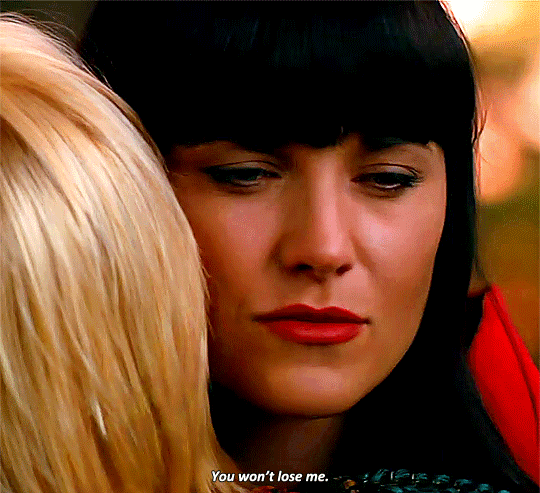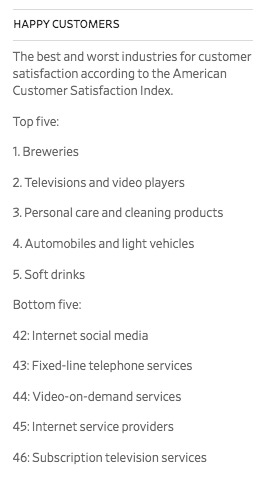#everyone has their own opinion on afin
Explore tagged Tumblr posts
Photo





#xwp#xena warrior princess#xenaedit#xena#xwpedit#tvgifs#tvedit#xena and gabrielle#otp: our souls are destined to be together#my gifs#*xenagifs#everyone has their own opinion on afin#but it has some of the most beautiful scenes in the entire show#ironically the eps as a whole would not even be in my top 10
906 notes
·
View notes
Text
Le plan de Felix est complètement con dans Emotion (The plan of Felix is so dumb in Emotion)




Laissez moi vous expliquer pourquoi je trouve son plan complètement con ! Il veut créer un monde sans que personne puisse les contrôler, un monde idéal selon lui soit. Mais ce crétin n'a pas pensé une seconde à comment ils pourraient faire pour survivre ?! Ils ont quand même besoin de manger malgré qu'ils soient des sentimonstres. Qui va réapprovisionner les magasins ? Qui va faire en sorte que cette ville continue de marcher sans personne qualifié pour accomplir tel ou tel métier ? J'oublie probablement d'autres trucs à ce sujet mais pour moi le plan de Felix est complètement con ! Surtout que techniquement faire disparaître tout le monde, c'est un peu un génocide. Ce qui est en soi un crime contre l'humanité et ça peu importe si ils sont sentimonstres ou non.
Toutefois son plan permet de révéler le côté tordu de ce dernier, il prétend faire tout ça pour Adrien afin qu'ils soient libre des personnes qui souhaitent les contrôler. Disant même qu'Adrien devrait être reconnaissant pour ce qu'il a fait. Sauf qu'il ne prend pas la peine d'en parler avec lui, sûrement parce qu'il pense que ce dernier n'a pas le courage de faire face à son propre père. Au final, il agit comme Gabriel le ferait avec Adrien, il prend des décisions le concernant sans même lui demander son avis. Donc voilà pourquoi Felix est un hypocrite à mes yeux, il prétend faire ça pour le bien des sentimonstres mais en vérité tout ce qu'il fait c'est avant tout pour lui même. Sans compter qu'il m'a un peu énervé à justifier ses actes, est ce que ça veut dire que je le déteste ? Non étonnamment, je suis assez neutre le concernant, il me faudra davantage d'épisodes le concernant pour avoir un avis sur lui.
Let me tell you why I think his plan is so dumb ! He wants to create a world where no one can control them, an ideal world according to him. But this moron hasn't thought for a second about how they're going to survive ?! They still need to eat, even though they're sentimonsters. Who's going to restock the stores? Who's going to keep this town going without anyone qualified to do this or that job? I'm probably forgetting other things on this subject, but as far as I'm concerned, Felix's plan is completely stupid ! Especially since, technically, making everyone disappear is a bit like genocide. Which in itself is a crime against humanity, whether they're sentimonsters or not.
However, his plan reveals his twisted side : he claims to be doing all this for Adrien so that they'll be free of the people who wish to control them. He even says that Adrien should be grateful for what he's done. Except he doesn't bother to talk to him about it, probably because he doesn't think Adrien has the courage to face up to his own father. In the end, he acts as Gabriel would with Adrien, making decisions about him without even asking his opinion. So that's why Felix is a hypocrite in my eyes: he claims to be doing this for the good of the sentimonsters, but in truth everything he does is primarily for himself. Not to mention the fact that he's got me a bit worked up justifying his actions, so does that mean I hate him ? No, surprisingly, I'm pretty neutral about him, I'll need more episodes about him to have an opinion about him.
#miraculous ladybug#ml#adrien agreste#felix fathom#People say that Felix is smart#No he is not#He's nothing more than a profiteer
6 notes
·
View notes
Note
imo, it seems like the best way to fix AFIN would have been to show the growth of Xena and Gabs in their dynamic rather than have them, esp Xena, revert to her Sins of the Past-guilt ridden self. It was at least one step backward
UGHHHHH YES 1000000% absolutely this is the case. Like - okay, spoilers for anyone who hasn’t seen XWP and/or doesn’t care for discussion re: the finale on their dash under the cut:
But look, I get why they wanted to bookend the series. “In my beginning is my end” and all that. I also get that in terms of her own Campbellian hero’s journey, Xena has been completely stagnant throughout the entire course of the show. Gabs has been the one growing and developing. And I ALSO get that the blatantly suicidal Xena of Sins of the Past wasn’t something that ever went away throughout the course of the show. Suicidal Xena has in fact been a throughline!
BUT.
WHAT. THE. ACTUAL. FUCK.
There were other ways to have resolved suicidal!Xena - including the most obvious? which is to have her confront it (with Gabs! preferably who is tired of her wife trying to get herself killed and sometimes succeeding, because they’re both getting too damn old for this and it’s not changing and it hurts every time) and grow past it. Xena did need to earn that final forgiveness (from herself, mostly) in order to do that, that’s true - but saying that she can only earn forgiveness through death? what. the fuck
And ALSO! As much as I love, with all my heart, post-FIN Gabs - with her sais and her chakram and a magical dragon on her back and the confidence to wield them all - I hate the implications that she only ever could have become who she was destined to be if Xena was (violently) removed from the picture, because there are other ways to confront the way they were a little too comfortable with their dynamic and the ways they maybe had hit a limit for Gabrielle.
I just… I hate it. I wish someone would change my mind about this. And I mean this doesn’t even go into the way I utterly loathe the way Xena died and the way Gabrielle discovered her body and all the needless, awful trauma it wrecked on her to have to deal with everyone’s promise that she could change it, she could still save Xena the way she had so many times before, if she just kept moving, just kept her hands moving, didn’t think about the mutilated body of her wife, how she’d handled her severed head, how she’d been strung up naked like a piece of meat, how she’d laid her body on a pyre and watched it burn without mourning it because she couldn’t afford to, could only think of how many years she’d spent loving that body and how she knew it inside and out, don’t think don’t think don’t think -
and then none of it mattered in the end. Promises reneged on, and nobody asked her opinion.
The story and set up were a mess too - but that mess doesn’t even touch this for me.
Anyway, thanks for coming to my TED talk.
36 notes
·
View notes
Text

NYLONMAG.DE 18/08/20
https://nylonmag.de/conchita-wurst-skiny/
TRADUCTION FRANÇAISE (de moi)
Pas de limites, pas d'étiquettes: nous passons 24 heures avec Conchita Wurst
«Conchita / TOM / WURST» est le titre du musicien lui-même sur Instagram. Cela devient clair: les noms et les sexes ne sont pas importants ici. Ce qui compte, c'est la personne. Et à partir de là, nous pouvons en apprendre beaucoup sur l'acceptation de soi et la diversité humaine. Dans la campagne de la marque de sous-vêtements SKINY et dans une conversation exclusive, nous sommes autorisés à accompagner Conchita / TOM / WURST 24 heures sur 24.
"Ding Dong!" - L'alarme se déclenche et puis? Nous sommes curieux de savoir comment se déroule une journée avec le musicien Tom Neuwirth. Tout le monde le connaît depuis qu'il a remporté le Concours Eurovision de la chanson 2014, lorsqu'il s'est glissé dans le rôle du personnage de fiction Conchita Wurst. Qui est derrière la perruque et le maquillage n'est plus un secret: il se présente maintenant en public sous son nom civil Tom (Thomas) Neuwirth et se montre plus que jamais comme une personne privée. Et de cela, nous pouvons en apprendre beaucoup sur l'acceptation de soi. Car pour lui c'est clair: il est simplement lui-même. Que ce soit en tant que Tom ou Conchita.
PARLER AVEC TOM / CONCHITA WURST SUR L'AUTO-ACCEPTATION ET LA DIVERSITÉ HUMAINE
Visage de la nouvelle campagne de la marque de sous-vêtements SKINY, l'artiste brouille les limites, car il est l'incarnation même de quelqu'un qui se livre à ses sentiments et ne croit en aucune convention en ce sens. Pas de noms. Pas d'étiquettes. Aucun sexe défini. Dans la collection SKINYxWURST, il n'y a même pas de division claire entre les sous-vêtements et les vêtements de nuit. Maintenant, allons-y: voici à quoi ressemblent 24 heures avec Conchita / Tom - du rituel du matin et du bureau à domicile à la fête avec des amis et au pillage nocturne du frigo.
Sur Instagram, vous parlez à certains de vos fans tous les vendredis par appel vidéo. Comment vous est venue l'idée de «FanFriday» et pourquoi est-ce important pour vous de leur parler si régulièrement?
J'ai fait une vertu d’une nécessité - en période de confinement, je ne pouvais pas jouer de concerts et je ne voulais pas perdre le contact avec mes fans. De plus, je suis toujours intéressé par les conversations intéressantes, ce qui était tout aussi divertissant pour moi que, espérons-le, les spectateurs ont aimé écouter les conversations. «FanFriday» est soudainement devenu la journée thématique préférée de mon talk-show Instagram parce que c'est un tel regain d'énergie de mettre un sourire sur les visages des gens juste par mes appels surprises!
Vous êtes une grande inspiration pour beaucoup et vous les avez aidés à être plus autonomes. Dans la campagne automne / hiver 2020 de SKINY, dont vous êtes le visage, l'acceptation de soi et la diversité sont également au centre des préoccupations. Quelles étapes recommanderiez-vous à ceux qui se sentent mal à l'aise en sous-vêtements et bodywear?
Je crois que d'une part, il faut commencer par soi-même, aimer son corps et aussi accepter ce que l'on ne peut pas changer. D'un autre côté, faire face à vos propres défauts aide également, à mon avis, à être moins critique envers les autres, et cela enlève la pression de paraître parfait. Dans l'ensemble, l'un et l'autre mènent à plus de satisfaction dans la vie, je pense.
Votre dernier album s'appelle «Truth Over Magnitude» et célèbre le fait d'être honnête avec vous-même. Donc, honnêtement: quelles vérités jusqu'alors inconnues votre bodywear révèle-t-il sur vous?
Donc, chaque fois que mon emploi du temps le permet, je porte des pantalons de survêtement et pas de sous-vêtements. J'ai du mal à juger exactement de ce que cela révèle de moi, je l'interprète comme un penchant pour le confort, et je suis toujours heureux quand je peux traîner sur le canapé à la maison.
La lingerie et le bodywear font partie des classiques qui s'affranchissent progressivement du stigmate de n'être que la décoration pour le partenaire romantique. Pourquoi ressentez une force à l'intérieur de vous-même lorsque vous les portez?
Je pense que c'est une sensation fantastique de porter des sous-vêtements qui soutiennent et font ressortir les atouts de mon corps. Les raisons à cela ne sont en aucun cas seulement romantiques, je pense que la plupart des choses dans la vie devraient être faites principalement pour vous-même afin de rendre votre propre vie belle et agréable. Et quand les sous-vêtements s'adaptent parfaitement, cela n'interfère pas avec ma vie quotidienne et ne me distrait pas, mais m’aide plutôt à être moi-même, de la meilleure façon possible.
Dans la campagne, SKINY vous accompagne tout au long de la vie pendant une journée. Pouvez-vous nous dire à quoi ressemble une journée type pour vous?
Cela dépend toujours si c'est un jour où je travaille en public ou si c'est un jour de congé. Les jours de congé s'expliquent simplement: je me détends le plus possible, j'essaie de manger sainement, je fais du sport plusieurs fois par semaine et j'essaie de passer le plus de temps possible avec mes proches. Quand je travaille, les journées commencent souvent très tôt et tout est chronométré jusqu'aux repas et quand j'ai de courtes pauses où je peux parler à des amis au téléphone. Les jours ouvrables, cependant, j'ai généralement le luxe que ma styliste Julia a préparé toute la garde-robe pour moi et je n'ai pas à me soucier des tenues car nous en avons discuté à l'avance.
Vous cédez complètement à votre sensibilité et ne croyez pas aux conventions. À quand remonte la dernière fois que vos émotions vous ont vraiment saisi et quel en a été le déclencheur?
Cela est venu avec l'émergence du mouvement #BlackLivesMatter, car c'était la première fois que je traitais vraiment de racisme structurel. Depuis, je n’ai pas abandonné le sujet, car nous devons l’aborder en tant qu’individus et en tant que société et mettre fin au racisme, même si c’est douloureux et ne fonctionne pas du jour au lendemain.
Dans une interview avec ZEIT Online, vous avez dit un jour: "En fin de compte, c'est juste moi, et parfois avec une perruque, parfois sans, parfois masculin, parfois féminin." Que peut faire chacun de nous pour rendre le flou de ces limites plus accessible à tous?
Remettre en question ses propres préjugés et prendre consciemment la décision d'être moins critique envers les autres, d'accepter que nous sommes des individus et que ce qui est juste pour moi ne doit pas nécessairement l'être pour les autres. En fin de compte, la façon dont les autres s'habillent, si et comment ils se maquillent ou comment ils vivent leur vie n'a aucune importance pour ma propre vie. Nous nous prenons parfois trop au sérieux et oublions que nous sommes le seul centre de l'univers dans nos propres vies, nous ne sommes pas pour le reste de l'humanité, donc nous ne devrions pas nous comporter comme ça.
ENGLISH TRANSLATION (by me)
No limits, no labels: we spend 24 hours with Conchita Wurst
“Conchita / TOM / WURST” is the title of the musician himself on Instagram. It becomes clear: names and genders are not important here. What matters is the person. And from that we can learn a lot about self-acceptance and human diversity. In the campaign of the underwear label SKINY and in an exclusive conversation, we are allowed to accompany Conchita / TOM / WURST 24 hours a day.
"Ring, ring!" - The alarm goes off and then? We are curious how a day with musician Tom Neuwirth goes like that. Everyone has known him since he won the 2014 Eurovision Song Contest, when he slipped into the role of the fictional character Conchita Wurst. Who is behind the wig and the make-up is no longer a secret: he is now going public under his civil name Tom (Thomas) Neuwirth and is showing himself more as a private person than ever before. And from this we can learn a lot about self-acceptance. Because for him it is clear: he is simply himself. Regardless of whether as Tom or Conchita.
A TALK WITH TOM / CONCHITA WURST ABOUT SELF-ACCEPTANCE AND HUMAN DIVERSITY DIVERSITY
As the face of the new campaign by the underwear label SKINY, the artist blurs the boundaries, because he is the epitome of someone who gives himself up to his feelings and does not believe in any conventions in this direction. No names. No labels. No defined gender. In the SKINYxWURST collection there is not even a clear division into underwear and nightwear. Now let's go: This is what 24 hours with Conchita / Tom look like - from the morning ritual and home office day to partying with friends and nightly looting the fridge.
On Instagram you talk to some of your fans every Friday via video call. How did you come up with the idea of “FanFriday” and why is it important to you to talk to them so regularly?
I made a virtue out of necessity - in times of lockdown I couldn't play concerts and I didn't want to lose touch with my fans. In addition, I am always interested in interesting conversations, which was just as entertaining for me as it was hopefully the bystanders enjoyed listening to the conversations. “FanFriday” suddenly became the favorite theme day of my Instagram talk show because it is such an energy boost to put a smile on people's faces just by my surprise calls!
You are a great inspiration to many and have helped them to stand by themselves more. In the Fall / Winter 2020 campaign from SKINY, of which you are the face, self-acceptance and diversity are also the focus. What steps would you recommend to those who feel uncomfortable in underwear and bodywear?
I believe that on the one hand you have to start with yourself, to love your body and also to accept what you cannot change. On the other hand, dealing with your own flaws also helps, in my opinion, to be less critical of others, and that in turn takes the pressure off of looking perfect. Overall, one and the other lead to more satisfaction in life, I think.
Your last album is called “Truth Over Magnitude” and celebrates being honest with yourself. So honestly: What previously unknown truths does your bodywear reveal about you?
So whenever my schedule allows, I wear sweatpants and no underwear. I find it difficult to judge exactly what that reveals about me, I interpret it as a penchant for comfort, and I am always happy when I can hang around on the couch at home.
Lingerie and bodywear are among the classics that are progressively freeing themselves from the stigma of being only decoration for the romantic counterpart. Why do you feel empowered inside yourself when wearing them?
I think it is a fantastic feeling to wear underwear that supports and brings out the benefits of my body. The reasons for this are by no means only romantic, I think most things in life should be done primarily for yourself in order to make your own life great and pleasant. And when underwear fits perfectly, it doesn't interfere with my everyday life and doesn't distract, but rather supports me in being myself, in the best possible way.
In the campaign, SKINY accompanies you through life for a day. Can you tell us what a typical day is like for you?
It always depends on whether it is a day that I work in public or whether it is a day off. Days off are explained simply: I relax as much as possible, try to eat healthily, do sports several times a week, and try to spend as much time as possible with loved ones. When I work, the days often start very early and everything is timed right through to meals and when I have short breaks where I can talk to friends on the phone. On working days, however, I usually have the luxury that my stylist Julia has prepared the entire wardrobe for me and I don't have to worry about outfits because we have discussed them in advance.
You give in to your feelings completely and don't believe in conventions. When was the last time your emotions really grabbed you and what was the trigger?
That came with the emergence of the #BlackLivesMatter movement, because that was the first time I really dealt with structural racism. Since then, I have not let go of the topic, because we have to deal with it as individuals and as a society and put an end to racism, even if it is painful and does not work overnight.
In an interview with ZEIT Online you once said: "In the end it's just me, and sometimes with a wig, sometimes without, sometimes masculine, sometimes feminine." What can each of us do to make the blurring of such boundaries more accessible to all people?
To question one's own prejudices and consciously make the decision to be less critical of other people, to accept that we are individuals and that what is right for me does not have to be right for other people. Ultimately, it is completely unimportant for my own life how other people dress, whether and how they put on make-up or how they go through their own lives. We sometimes take ourselves too seriously and forget that we are the only center of the universe in our own lives, we are not for the rest of humanity, so we shouldn't behave like that.
#conchitawurst#wurst#tomneuwirth#artist#singer#esc2014#escwinner#music#performer#lgbt#celebrity#article#traduction#translation
0 notes
Text
Salud en barras: entrevista a Tim Etherington-Judge fundador de Healthy Hospo

Para los que no lo conocen el proyecto Healthy Hospo viene hace más de un año haciendo lo impensado dentro de la industria gastronómica, específicamente el sector dedicado a los bares: cuidar de la salud de los bartenders y afines. Desde este espacio tenemos una gran admiración por HH quienes además de tratar temas relevantes y necesarios hoy de forma innovadora (pueden seguir lo que hacen desde su IG), han servido de inspiración para nuestro propio proyecto orientado a la salud del gastronómico #GastronomíaSaludable del Mapa de Barmaids & Afines.
Hace unas semanas nos pusimos a charlar con Tim Etherington-Judge, alma máter de HH, bartender, emprendedor y healthy advocate, y esto nos contó de cómo comenzó el proyecto, por qué y hacia dónde van. Además estamos felices de anunciar que Healthy Hospo es padrino del Mapa. No hay excusa para no cuidarse y si queremos pensar en una industria humanamente sustentable hay que empezar a hacer algo al respecto.
Les dejamos la entrevista en inglés, pronto versión en español.
DM: Tell me a little bit about the beginnings of HH and your personal history: how did you started and why it´s health important?
TIM: I started Healthy Hospo after a personal breakdown and suicide attempt in a hotel room in Athens. Following my breakdown I decided to speak publicly about my struggles with the industry and my mental health and discovered that not only was I not alone, hundreds of people wrote to me privately, telling me their stories of struggle, ill health whilst suffering in silence. It was for these people that I started HH, to help build a healthier, happier industry so that we can all benefit.
DM: There has been some change in the mentality within the industry recently. I was wondering how do you see two particular aspects: on one side, the little attention paid to issues such as addictions and mental health. On the other, the need for evolution of the role of the bartender (being a more professional and responsible about alcohol consumptiom at work).
TIM: I think they go hand in hand and we’re starting to see that evolution now as bartenders are focusing more on their health than ever before as well as more conversation around the topics. Whilst there is still a long way to go, it’s a huge step forward from where we were 10 years ago and I’m excited by the future. Health is wholistic and we need to look at the wide picture from sleep and nutrition to getting people engaged in activities outside of sitting in bars drinking. I’m a huge fan of giving people reasons to drink less rather than telling them drinking is bad and with high profile bartenders like Jim Meehan speaking it’s only going to have a positive impact upon the industry.
DM: How can we get more people to talk about these issues? And more brands and bars on board with the care of their employees?
TIM: This is what I’m working on for 2020. Healthy Hospo is already working with most of the large liquor brands as well as some pioneering bar operators around the world and the most people and organisations that get involved in the conversation the better. It’s heart warming to see organisations, like yours, popping up all over the world to support hospitality industry workers towards a healthier future.
DM: In you opinion, which are the worst problems within beverage industry today?
TIM: I feel that most of our struggles stem from the toxic culture of excess of our industry. We work hard, we play just as hard yet we don’t allow ourselves the time to recover. We celebrate bad behaviour such as hangovers or just how drunk we are way too much as if it’s a right of passage or stripes to be earned to become a ‘real’ bartender. We need to encourage and support each other to be healthier, happier and seek self improvement rather than a cycle of continuing excess.
DM: How do you approach them from HH?
TIM: Healthy Hospo takes a wholistic approach focusing on preventative education, you can’t fill a glass from an empty jug after all. We believe that it’s better to work to avoid the problems before they arise than to treat them once they do. Our core pillars of Sleep/Nutrition/Exercise/Social Connection/Mental Health help give people a more balanced approach to their own personal health. We also work with employers to show them the business benefits of adopting healthier working practices.
DM: It is usually thought that working in a bar or in a beverage company and taking care of oneself/being healty is almost an oximoron. Is there such a contradiction?
TIM: Absolutely not, it’s that people get caught up thinking they’re rockstars rather than putting the customer first. Look at bartenders like Peter Dorelli. He’s been bartending for 6 decades, holding residence in the most prestigious job in the industry (Head bartender, American Bar, Savoy Hotel) and is still influential and a huge part of our industry well into his late 70’s. The secret to Peters longevity is a rigorous health program involving daily yoga and healthy eating.
DM: The biggest surprise since you started HH?
TIM: I have been delightfully surprised with how the industry has accepted healthy hospo and the work that we do. There’s been almost unanimous support from all areas of the industry from bartenders to brands with everyone working towards a common goal.
DM: What´s in store next for HH? Will you come to South America? (we hope so!)?
TIM: We have a very exciting 2020 planned. I don’t want to say too much for now, but Spring next year we’ll be launching something that will hopefully act as a huge springboard to my dream of a Healthier, Happier Hospitality industry. Next year I will personally be cutting back on travel to reduce my CO2 emissions, so will be very selective with where I go, but absolutely South America is on the cards to support your incredible work and help the bartenders of the region.
0 notes
Text
Article from WSJ: Everyone Hates Customer Service. This Is Why.
Technology lets companies see how badly they can treat consumers, right up until the moment they bolt

PHOTO ILLUSTRATION BY JOHN KUCZALA; PHOTOS: ISTOCK
By Sharon Terlep
In corporate parlance, it’s called the “breakpoint.” It’s how far customers can be pushed before their heads explode.
From long waits at the airport to rude store clerks to ineffective helplines, shoddy customer service is a universal frustration. Today, companies crunch data and use artificial intelligence to determine exactly how angry a customer has to be to bolt. Many are walking right up to that line.
Technologies can track how long a customer will wait for a human to answer the phone and how many ads they will tolerate. They can monitor the tone of a customer’s voice. Companies know what steps they must take to keep shoppers loyal—and which they can skip.
This knowledge has contributed to a decline in how customers are treated, say analysts, consultants and former executives. A smaller number make the counter case: that companies are using their better read to improve the customer experience.
“There is more data available on just how disgruntled someone can be,” said Megan Burns, CEO of consulting company Experience Enterprises.
Sally Robey reached her breakpoint with AT&T Inc. after six calls and a collective four hours on the phone with customer-service agents over the price of an unlimited phone plan. “It’s like they have a stranglehold on us,” said Ms. Robey, who had been an AT&T customer for 30 years when she decided she was done.

Sally Robey, in her home in Wilmette, Ill., says made six calls and spent four hours on the phone with customer-service agents over the price of an unlimited phone plan. PHOTOS: EVAN JENKINS FOR THE WALL STREET JOURNAL(2)
Dogged by overage fees on her family’s seven-phone wireless plan, Ms. Robey, a mother of four from Wilmette, Ill., set out to get a plan with unlimited data. An AT&T cable subscriber and customer since 1988, she eventually got a better deal from Verizon CommunicationsInc. and returned to AT&T to see if it would match the rates. AT&T declined.
“I said, ‘This is ridiculous, you’re not doing anything to keep us,’” Ms. Robey said. The agent, she said, told her: “No, there’s nothing I can do.”
It was only when Ms. Robey was in the act of switching phone numbers to Verizon from AT&T that the wireless carrier buckled, she said.
“Then they were, like, ‘Oh, we want to keep you.’ ” She ended up staying because the company gave her what she wanted right before she was about to leave.
An AT&T spokeswoman declined to comment on Ms. Robey’s situation but said the company contacted her on the matter.
The telecom giant is among the companies employing artificial intelligence to gauge customers’ behavior patterns and personalities to pair them with customer-service agents.
“Matching the right agent to customers improves the likelihood of a positive outcome, measured by resolution rate and satisfaction scores,” an AT&T spokeswoman said. The company declined to comment further.

Some companies now equip call centers with software that analyzes a caller’s tone of voice and pace of speech to determine how upset the person is. Angrier callers get routed to agents skilled at de-escalating conflict, who are in turn warned in advance.
San Francisco-based cloud communications provider Dialpad Inc. transcribes call-center conversations in real time, sensing when a call is taking a turn for the worse. That can help prompt a manager to listen in, view the transcript and step in if necessary without having to ask customers to repeat themselves.
“Voice is the last offline data set,” said Dan O’Connell, chief strategy officer, who says analyzing the tone of calls can help business quickly address customer concerns.
Computing power and processing power have expanded exponentially, said John Birrer, chief of staff of Afiniti Inc., a company that makes call-center software. “That allows you to make a millisecond decision when a call comes in to decide in a sophisticated way how to handle the call,” he said.
Afiniti crunches data gleaned from consumers��� demographic profiles, credit scores and past interactions with a company to determine which customer-service agent is the best fit. An algorithm then matches the caller to the agent who has had the most success with that type of caller.
“Every agent has their own personality and every customer has their own personality,” said Mr. Birrer. “We try to pair people.” AT&T uses the company’s system.
The emergence of companies that sell their products directly to shoppers means more firms have data on exactly when, how and why consumers buy—or don’t buy—their products. Since they don’t use a middleman they can know, for instance, that two delayed shipments won’t cost the company business, but three will.
Online sellers don’t have to worry as much about driving customers away with ads that pop up during the checkout process because they know it takes a certain number until people actually cancel their purchase, according to an industry consultant who worked at a company that used such a system. Retailers track consumers’ clicks as they go through the ordering process, allowing them to discern how many ads can appear before shoppers bail.

When she was about to change companies, Ms. Robey says she got the deal she wanted. PHOTO: EVAN JENKINS FOR THE WALL STREET JOURNAL
Just as data can be used to measure customers’ threshold for bad service, it also helps pinpoint which shoppers are most profitable and, therefore, worth the effort and expense to please.
“Companies have gotten good at figuring out what does and doesn’t move the needle and what things will increase sales and what will not increase sales,” said John Mitchell, president and managing principal of Applied Marketing Science, a customer-service consulting firm.
“Breakpoint” is an informal term used by some companies and consultants to describe the point at which consumers quit, whether it’s canceling a subscription service, no longer buying a product or switching to a rival company.
Matt Dixon, a longtime customer-service consultant, is now product chief at Tethr, an Austin-based company that uses artificial intelligence to analyze customer interactions.
Mr. Dixon said there is a disconnect between what companies think customers want and what they actually want. For instance, it’s most common for customer-service agents to have empathetic personalities, a sought-after trait in the field.
But in an analysis of how well customer-service agents perform, a personality type known as a “controller,” someone who is “outspoken and opinionated,” did far better, Mr. Dixon said. Yet only 2% of managers interviewed in the study said they would consider hiring such a person.
“People want to deal with someone who is smarter than they are and who will fix their problem,” he said.
Executives might not even have to solve the problem to put the customer at ease. A Harvard study of Twitter interactions from March 2015 to April 2016 found replying speedily to a complaining customer and making the response personal is an effective way to retain business, even if the company doesn’t resolve the issue.
The study examined more than 400,000 customer-service tweets involving airlines and wireless carriers in the U.S. Researchers contacted the posters and found consumers who engaged companies on Twitter were more likely to prefer the brand or pay more for it, even if their tweet was negative or neutral.
Dan Russo, a once-disgruntled Wells Fargo & Co. customer, has come to appreciate an efficient approach to customer service. He says that three years ago, he was unemployed when he incurred hundreds of dollars in overdraft fees, triggered because a direct-withdrawal for a gym membership, which he believed he had canceled, left his bank account short. That caused a handful of other small charges to bounce.
Furious because the purchases that bounced amounted to less than $20, he said he pleaded with a bank agent to remove the fees. He said he called at least seven times, going through different departments and supervisors.
Mr. Russo, a 36-year-old regional vice president for a construction company who lives in Costa Mesa, Calif., switched to an online bank—where, he said, “You call, the phone rings, and someone answers. No sub menu, no ‘hit option 9.’ ”—and has been pleased with his experience.
“I think these big banks know people will call in, get frustrated and hang up,” he said. “They know they can charge fees before someone leaves, and they know there’s a perception that it’s hard to change banks.”
A Wells Fargo spokesman declined to comment on Mr. Russo’s situation. The bank provides customers with a list of outside entities that make withdrawals to customers’ accounts to help them track recurring payments, he said. It also has added features to prevent overdraft fees, such as automatically sending an alert to online banking customers when their available balance drops to zero or below.
There is plenty to blame for the collective angst over poor customer service. Companies are bigger and employees more transient. Consumers have more avenues to shop and are therefore less loyal. The outsourcing wave of the 1990s and 2000s shifted legions of call centers to developing nations, where workers make little money, are disconnected from the companies they work for and often face language barriers.
Businesses have digitized basic customer-service functions, such as checking bank statements and making online returns. That means customers who connect with customer-service agents are generally those with the most complex problems. That leads to more difficult interactions.
Gutted customer-service operations are a lasting legacy of the financial crisis. More than 80% of companies pared customer-service or contact-center staff amid the recession, according to DMG, a West Orange, N.J.-based consulting firm.
“They just kept cutting and downsizing” during the financial crisis, said Richard Shapiro, founder and president of the Center for Client Retention in New Jersey. Customer-service departments and employees are generally the first and easiest cut companies make in difficult times. “If a general manager all of a sudden had a high profit we knew why: they cut their customer service department,” he said. “But a year later they would have problems.”
HappyOrNot Ltd. is a company that allows businesses to track customer satisfaction in stores and airports using red-and-green buttons and touch screens. Customers tap the devices—a green smiley face for happy, or red frowny face for not—to provide immediate feedback. Co-founder Ville Levaniemi calls the concept a “service panic button.”
Unhappy customers are by far more likely to reply, he said. The company needed to build heartier machines for airports to withstand angry punches to the red frown. Touch screens had to be programmed to recognize repeat entries by the same person trying to amplify their negative opinion.
“It’s kind of cathartic, it provides them a channel to vent their dissatisfaction,” he said.
Historians point to another factor in the erosion of customer service: communications technology. Automated call distributors, which routed calls to customer-service agents, furthered the ability of companies to deal with customers remotely and en masse, depersonalizing the relationship.
Continental Airlines was one of the first big companies to make broad use of call distributors using a system developed in the early 1970s.

Passengers waited to talk with customer service agents at Denver International Airport in June. Airlines were known for their customer service in the 1960s.PHOTOS: GETTY IMAGES(2)
It is perhaps fitting that the industry which pioneered one of the most transformative technologies in customer service is also the one often linked to its declining standards.
Airlines in the 1950s and 1960s were known for doting flight attendants and perks such as fine dining and souvenirs for children. Delta Air Lines Inc. founder C.E. Woolman, who led the company in the 1930s and 1940s, would sometimes bring delayed passengers home for dinner and to sleep, said his daughter, Barbara Woolman Preston, according to the company’s website.
Deregulation of the airline industry in the late 1970s led to an explosion in competition. While the shift made commercial flying far more affordable, it also led to decades of cost cutting and increasingly limited service so loathed by current-day travelers.
The airline industry last year was near the bottom of the American Customer Satisfaction Index, which rates industries based on customer surveys. Last year, airlines averaged 39th out of ACSI’s 46 benchmarked industries. In 2018, internet-service providers and subscription-television services were the lowest. Brewing companies scored highest.
While customer frustration is more palpable today, whether people are truly treated worse by companies now is a matter of debate among researchers, analysts and companies.
Ewan Duncan, a McKinsey & Co. senior partner who consults on customer service, is among those who say the perception—not the actual experience—has grown worse in recent years. The social-media echo chamber and the fact that live customer-service agents are tackling more complex problems gives the impression things are worse than they are, he said.
“When you’re sitting on a plane and don’t have a gate, you’re grumpy and you tweet it out,” Mr. Duncan said. “If you have a good experience, you thank somebody and that’s it.”
0 notes